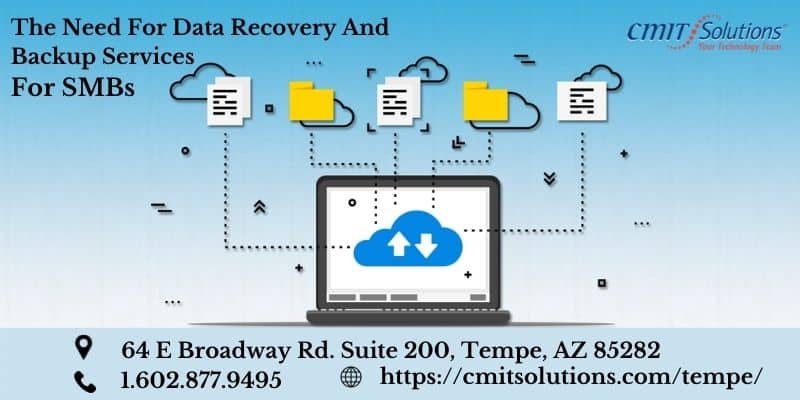Hybrid Workplace: Reshaping the Office Environment
To be or not to be compliant? This question may elicit a few weary sighs from business leaders across the globe. Compliance costs money, but non-compliance costs more than just those dollars. It costs your reputation, privacy, security, and above all, your business.
Is compliance necessary? What are the consequences of being non-compliant, and what can you do to ensure organizational compliance? Let’s get straight to the details.
Regulatory Compliance: An Exorbitant Business-Critical Requisite
Any organization that prioritizes the safety and welfare of its customers and employees would never mess with the legal obligations that make it compliant. But, at what cost? The rising tide of regulatory compliance heads into staggering numbers, especially when the organization grows.
The Cost of Compliance
Compliance is becoming an increasingly complex, costly, and cross-functional effort. It is no longer a responsibility restricted to one domain in an organization but a joint effort that requires detailed planning and implementation.
Detailed planning often ends with a long list of software and databases to keep track of all the data and additional staff to assist in time-consuming tasks like audits, risk management, and performance management. An organization must consider various compliance complexities as it steadily expands its business borders. The compliance responsibility list includes employees, their safety, wages, benefits, discrimination, harassment, recruitment, removal, etc. Compliance costs for data security are the highest – even though most businesses invest in data security to comply with laws and regulations rather than improve business security. Then comes the mega-challenge of implementing compliance protocols and training your workforce to understand the complexities of compliance.
Here’s where the costs start escalating, but hey, this cost might be the only big drawback of compliance. Fulfilling compliance policies and procedures on time keeps you on the right side of the law, which means a whole lot of benefits for your organization, such as:
- Enhanced operational efficiency and safety.
- Goodwill and trust of customers and stakeholders.
- Improved employee engagement and retention.
- Better public relationships with business associates.
- Stronger reputation and bottom line.
- Transparent and accountable audit trail.
- Easier implementation of organizational policies.
Hence, when choosing between compliance and non-compliance, the former wins hands down because the latter is a major risk in disguise.
Implementing Compliance Measures: The Potential Pain Points
When implementing compliance protocols within your workforce, you ought to brace yourself for one challenge: Compliance training and employees don’t always get along. Some of the common pain points you may encounter with employees is that:
- They feel ill-equipped to implement compliance measures despite all the training.
- They feel it wastes their time, which they might have used for official purposes.
- They often miss out on vital points due to a lack of engagement and interest in the training sessions.
If not identified and rectified, these pain points can manifest into major penalties and even incarceration. It is crucial to ensure each member knows their specific purpose, even though most organizations are equipped with staff designated for these roles.
Unfortunately, compliance specialists many companies hire to enforce regulations are not provided with the tools to help them succeed. Instead, thousands of dollars go down the drain for:
- Extensive searches through drives and emails by the compliance team.
- Inadequate knowledge by employees in locating the right policies and procedures that apply to their role.
- Manual tracking of acknowledgment emails and relying on word-of-mouth information by managers.
Non-Compliance: What it Can Cost Your Organization
If compliance costs millions, non-compliance will have you bleeding in billions. Non-compliance with governmental regulations, data security, and employee safety can push organizations into a disastrous abyss.
Earlier, non-compliance used to be frowned upon, but it did not amount to steep fines, legal consequences, or adverse business reputation consequences. But that’s no longer the case. As compliance becomes a bigger priority, the risks associated with non-compliance are constantly evolving.
The government, financial institutions like banks, and the public closely watch businesses that show a lackadaisical attitude toward compliance. When an organization shows signs of non-compliance, governmental agencies quickly initiate action by:
- Invoking corrective action by sending warning letters specifying the violations and seeking a response.
- Prevent non-compliant products from sale by confiscating and removing them from the market.
- Obtaining court injunctions to prevent companies from violating the law.
- Obtaining litigation and compensatory costs for loss of reputation, customer trust, and market erosion.
A Closer Look Into The Monetary Consequences of Non-Compliance
The disastrous impact of regulatory non-compliance is better explained and understood with an example. Let’s take the GDPR. Drafted and implemented by the European Union, the General Data Protection Regulation (GDPR) is a personal data privacy regulation created to protect European citizens from privacy breaches. The GDPR was exclusively passed in response to corporate misuse of customer information for marketing and research.
So, what happens if an organization violates the GDPR? The glaring consequences, of course, are the shockingly staggering fines amounting to millions. Here’s how the GDPR works:
GDPR fines fall into two categories:
- The lowest fine costs up to 11.03 million USD or 2% of the company’s yearly revenue, whichever is higher.
- The highest fines cost up to 22.07 million USD or 4% of the company’s year revenue, whichever is higher.
The data protection regulator administers the GDPR fines in each European Union country. The authority analyses several criteria to determine the severity of the violation and the penalty amount.
The monetary consequence of any regulation violation is only the tip of the iceberg. The real damage manifests itself in various disastrous consequences.
The Adverse Impact of Non-Compliance
- Loss of reputation, which is often an overlooked consequence, is also the hardest to measure or repair. The reputation that has taken years of growth and nurturing can crumble into nothing with careless non-compliance.
- Data breaches, security threats, data loss, cyber theft, and insider attacks are bound to increase with non-compliance. The value and sensitivity of personal and proprietary data make data protection complex but necessary.
- Business disruption is another major consequence because organizations must implement compliance changes to resume operations.
- Global operations can halt because maintaining in-country compliance is a must in many nations.
- The above-mentioned consequences can eventually snowball into a huge revenue loss leading to irreversible damage. A company could lose more money by ignoring these issues than it would have by investing in solutions to prevent them.
In short, compliance is not to be taken for granted. That said, ineffective compliance is as catastrophic as non-compliance. The reason is simple: As far as compliance is concerned, you must be all in with a 100% commitment. There are no two ways about it.
In an era where platforms and resources keep growing, businesses need automated controls to reduce their manual control burden. Without this technology, security professionals have to constantly test and monitor for misconfigurations, inappropriate access, and violations of SoD (Separation of Duties). There is a lot at stake. It is, therefore, easier to maintain compliance than to deal with non-compliance issues.
Measures for Consistent Compliance: What You Should Do
Being compliant is not an expense but an investment that goes a long way. It builds your reputation, improves customer acquisition, and helps expand your organizational borders.
Also Read: Data Protection For Business Continuity: The Why & How Answered
Here are four steps that will help you take control of your compliance program:
- Implement Identity Governance and Administration (IGA) to enable authorized access to your IT ecosystem.
- Implement Application Access Governance controls (AAG) to identify and curb potential access violations.
- Strengthen your application control frameworks with risk-based controls.
- Track these controls to streamline your audit processes and show transparency in compliance.
Be in Control, and Be Compliant!
Here’s a simple thing to remember about compliance: Non-compliance costs three times the average cost of implementing compliance measures. Besides the mind-boggling penalties, there is a solid track record of enforcement. So, why take risks?
To ensure you have a robust internal compliance program and reliable data protection and backup, you can seek the guidance of the CMIT team. Operating from Tempe, USA, CMIT Solutions is an IT consulting company providing a wide range of IT support solutions for all kinds of businesses. Call us today!
Our IT Services
| Managed IT Services | Cybersecurity | Productivity Applications |
| IT Support | Cloud Services | Network Management |
| Compliance | Data Backup | Unified Communications |
| IT Guidance | IT Procurement |




